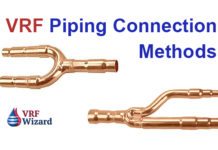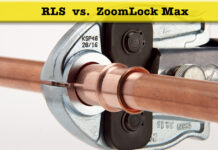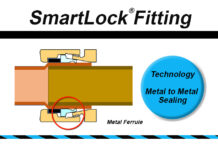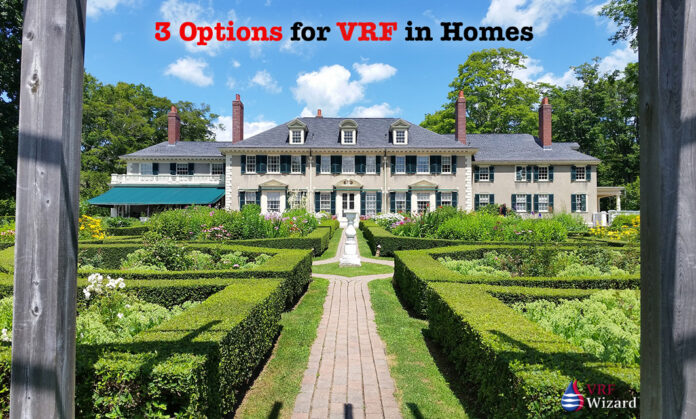Should you install a VRF Heat Recovery or VRF Heat Pump system for a Residential home or commercial property?
We will discuss three options you have related to air-cooled split systems, not including rooftop packed heat pumps or gas/electric units.
- Option 1 – VRF Heat Recovery
- Option 2 – VRF Multi-Split System Heat Pump
- Option 3 – Single Zone Split System Heat Pump
Option 1 – VRF Heat Recovery
VRF Heat Recovery Systems are mostly used for commercial buildings, so most homes are too small to reap the benefits of a heat recovery system in relationship to the added cost. If you’re going to have a lot of different zones (rooms or spaces)(#2 in image below) with different thermal requirements, and the house is large enough (think Mansion) to warrant the added cost, then heat recovery may make sense, but most likely the multi or single zone split-system heat pump system would work best as not all spaces would require conditioning at the same time.
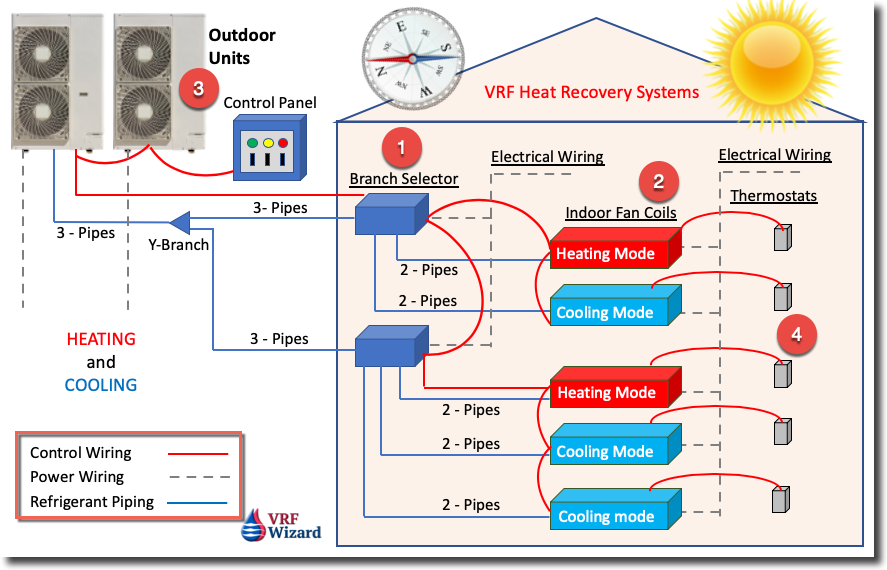
VRF Heat recovery systems allows you to have some rooms in cooling mode while others are in heating mode. If you don’t believe this condition will ever exist in your home, then the Split-System Heat Pumps are the easier and more economical answer.
VRF Heat Recovery systems require some form of Branch Selector Box (#1 in image above), which provides the control mechanism that directs refrigerant flow to meet the varying demands of the Indoor Fan Coils (#2 in image). This piece of equipment is not required in a Heat Pump system. This branch selector box will need electrical power and depending on the VRF manufacture would also require a condensate drain, this adds cost to the system.



VRF Zoning
What creates the need for simultaneous heating and cooling is the different exposures to solar loads or interior loads from lighting or plug loads (items connected to electrical outlets).
For instance if you have the sun shining through southern windows, thereby requiring cooling, while at the same time the large northern windows provide the feeling for the need to heat the space, then some form of simultaneous heating and cooling will be required.
Thermal zoning is slicing up the home or building into areas (zones) that react similar for either heating or cooling. This is usually divided according to the spaces exposure to the sun or interior loads.
Diversity
VRF Heat Recovery systems make sense when there is enough diversity in the zoning to allow for the heat that normally gets rejected to the outdoors to be used within the space, if not then there is no point in using these types of systems for energy savings.
Option 2 – VRF Multi-Split System Heat Pump
The most likely VRF system for a larger home would be the VRF Multi-Split System Heat Pump as opposed to a VRF Heat Recovery System. The VRF Multi-Split system allows you to use multiple indoor units (#5) with one or more Outdoor Units, depending on the size of the system.
The only drawback is that you have to choose either heating or cooling for all zones, no simultaneous heating and cooling.
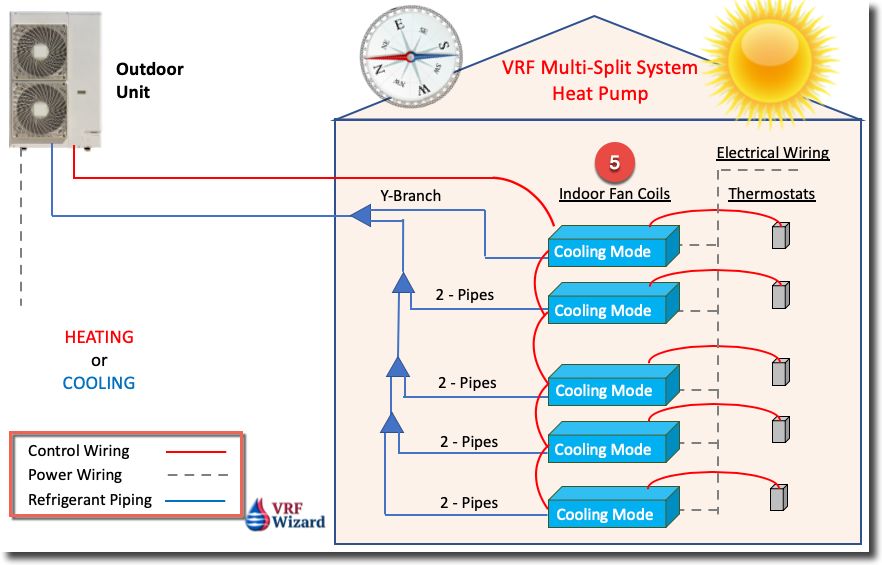

System Benefits
- Using a VRF Multi-split system heat pump allows you to have multiple indoor units connected to one outdoor unit. Each manufacture differs in the ratio of indoor units to outdoor unit.
- You can mix the types of indoor units, such as ducted on non-ducted wall mounted units.
- Indoor units can be of different sizes, so you can serve small or larger size rooms using the same single outdoor unit.
- Indoor units can be of different sizes, so you can serve small or larger size rooms using the same single outdoor unit.
Option 3 – Single Zone Split System
The easiest to install and the most common residential system would be the single zone split system. This can be cooling only, or a heat pump which provides heating and cooling as required.
You can use one or more of these systems to meet the needs of your space. These can be used to handle various zoning challenges by providing one system for each zone type.
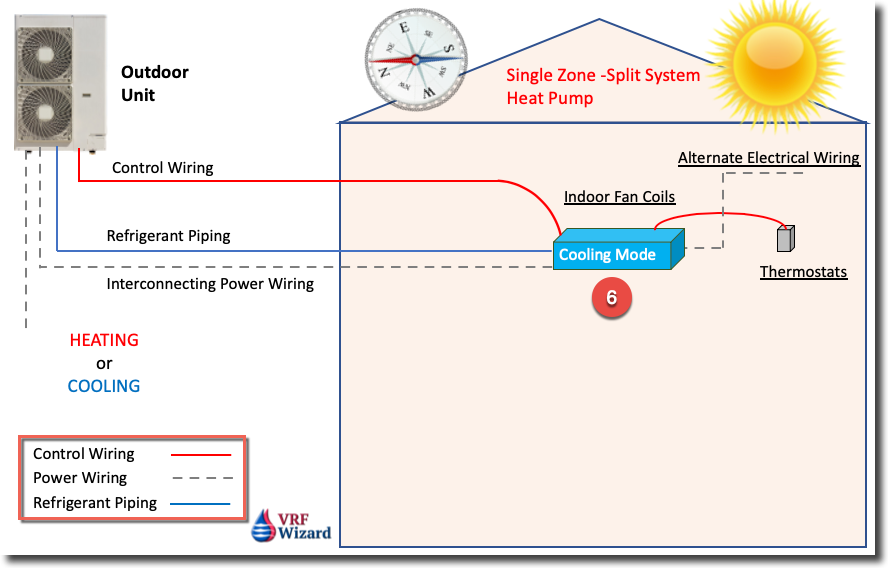

Advantages and Disadvantages
- Easiest system to install and operate.
- Only allows one indoor fan coil unit for every outdoor unit.
- Only allows one zone per outdoor unit.
Questions to ask yourself
- Do I require heating and cooling at the same time within my home or commercial property?
- Is my house or commercial property large enough to warrant the additional cost of a VRF Heat Recovery System?
- Cab I use a VRF Multi-Split System Heat Pump with the understanding that all the indoor units will be in either all heating or all cooling mode?
- Can I use several individual Heat Pumps to create the zoning I require?
System Comparison
The VRF Heat Recovery system has the advantage of simultaneous heating and cooling along with some energy savings based on how well the system is diversified and zoned.
The system also allows for a greater number of indoor units per outdoor unit.
It has the disadvantage of requiring additional electrical for the branch Selector Boxes that control the flow of refrigerant. This Selector boxes could also require a condensate drain depending on the VRF manufacture you use, like that of Mitsubishi.
Another disadvantage is that the system is more complex than the standard split system and requires someone knowledgeable in its installation and commissioning.


Summary
Your mechanical engineer will be able to make the decision on which system is best once they review the size and layout of your home, along with the properties elevation and solar orientation.
As mechanical engineers we understand the size range of homes can vary considerably, as we have worked on homes that were greater than 55,000 FT2, much larger than some commercial properties. These aren’t your averages homes, but they exist and are often outfitted with commercial systems, so as engineers we never say no to a system type until we have asked enough questions.
There is a very slim chance that a VRF Heat Recovery System will be specified for a home, it will most likely be a VRF Multi-Split System Heat Pump (option 2) or a Single Zone Split System (option 3), or one of the traditional methods for large structures such as chilled water and heating hot water systems.
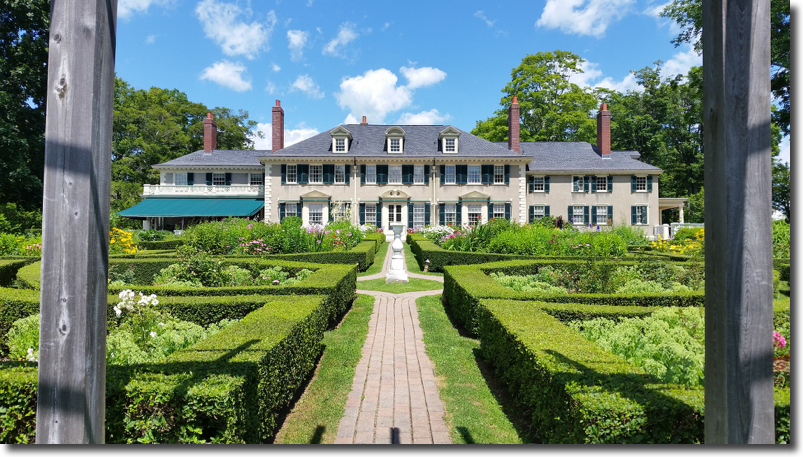

Have an engineer review the size, layout and orientation of your home and whether a single outdoor unit with multiple indoor fan coils would work for you, or if your home is large enough to require multiple systems.
All the split system options shown above allow for easier installations on renovation projects because of the reduced space required to run refrigerant piping in lieu of air ducts.








